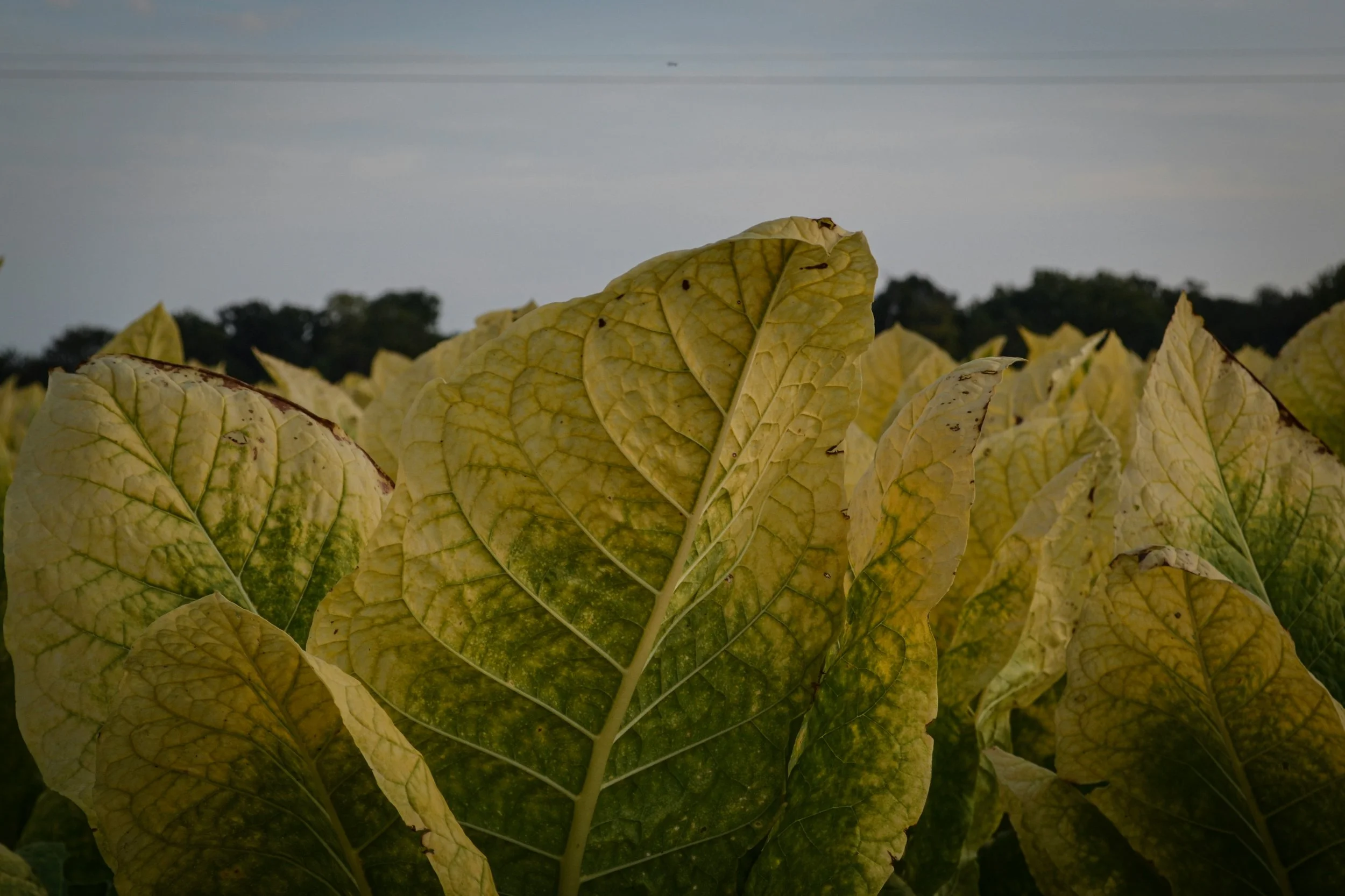The Essential Leaves: How Tobacco Becomes a Cigar
When a cigar rests in your hand, it feels like a single object, tight and seamless, but inside it is nothing more—and nothing less—than a series of carefully chosen tobacco leaves. These leaves, each with their own journey from the plant, become the wrapper, the binder, and the filler. To understand cigars is to understand the essential roles these leaves play, because they are not interchangeable parts. They are the vocabulary blenders use to tell their stories. And like any good story, the way these leaves are chosen, prepared, and combined decides whether a cigar becomes memorable or forgettable.
The tobacco plant itself provides a surprising range of material. Its lower leaves burn more easily, its middle leaves speak in aromas and nuance, its upper leaves carry strength and body. A farmer’s decision to top the plant, to let the sun harden or soften certain primings, and to cure and ferment with patience or speed will determine how the leaf tastes and behaves once rolled. This is where the magic begins. The same stalk can give delicate volado at the base and muscular ligero at the top, and between those extremes are seco and viso that contribute depth, sweetness, and balance. Centuries of cultivation have taught growers and blenders that the secret to cigars lies in knowing these layers and drawing from them in the right measure.
Wrapper, Binder, and Filler: The Trilogy of Construction
The first thing a smoker notices is the wrapper. This outer leaf is thin, elastic, and chosen as much for beauty as for taste. A Connecticut Shade wrapper, pale and silky, whispers of cream and cedar, while a San Andrés Maduro, dark and thick, roars with cocoa and earth. Wrappers are notoriously difficult to grow because even a small blemish can make them unusable. They demand rich soil, careful fermentation, and curing barns that can coax out color and texture without ruining the surface. Their contribution is often described as visual, but any seasoned smoker knows that in a corona or lancero, where the wrapper-to-filler ratio is high, the wrapper becomes the loudest voice in the choir.
The binder, hidden beneath, is the quiet hero. It must be strong enough to hold the bunch of filler leaves in place yet flexible enough for the roller to manipulate. While binders are less pretty, they add stability in combustion and can lend flavor of their own. A broadleaf binder can offer sweetness and body; a Habano binder can push spice and structure. Without the binder, the cigar could not physically exist—it is the spine on which the wrapper stretches and the filler rests.
Then there is the filler, the part most often described as the soul of the cigar. It is here that blenders weave complexity, selecting from multiple countries and regions, combining leaves of different ages, and arranging volado, seco, viso, and ligero in precise ratios. Ligero delivers the punch, seco the fragrance, volado the burn. Sometimes medio tiempo, the rarest leaves at the very top of the plant, appear in ultra-premium blends, contributing density and unique resonance. The arrangement of filler leaves, whether entubado (each leaf rolled into a tube) or accordion (layered for efficiency), influences the draw and the burn. It is a craft invisible to the smoker until the first puff, when suddenly airflow, flavor, and strength either harmonize or fall apart.
From Field to Fire: Why the Essential Leaves Matter
The journey of each leaf from the plant to the flame is long, and every step protects or destroys its potential. After harvest, leaves are cured in barns where chlorophyll fades and sugars surface. They are then fermented, stacked in pilónes where heat and humidity coax out ammonia and bitterness. Finally, they age in bales until the leaf is calm, aromatic, and pliable enough to be rolled. Wrapper leaves may rest for years; filler and binder each require different times. Only then do they come together on the roller’s table, three categories of leaf that must marry into one.
When you smoke a cigar, you are tasting this invisible history. The wrapper sets the opening note, the binder controls the tempo, and the filler tells the story in chapters. The first third of the cigar often mirrors the wrapper’s promise. The middle third broadens as fillers awaken. The final third, where oils have concentrated and combustion grows hotter, becomes the proof of whether the blender balanced ligero and seco with enough grace to prevent bitterness. Every draw is a reflection of choices made long before the cigar reached your hand.
Understanding the essential leaves does not diminish the romance of smoking—it deepens it. When you recognize the sweetness of a Brazilian Mata Fina binder or the peppery drive of Nicaraguan ligero, you feel connected to the geography, the climate, and the people who nurtured that plant. The leaf is not just a material; it is a memory of sunlight, soil, and hands that turned it into something more than a crop. To speak of cigars is to speak of leaves, and to smoke one well is to honor their journey.
